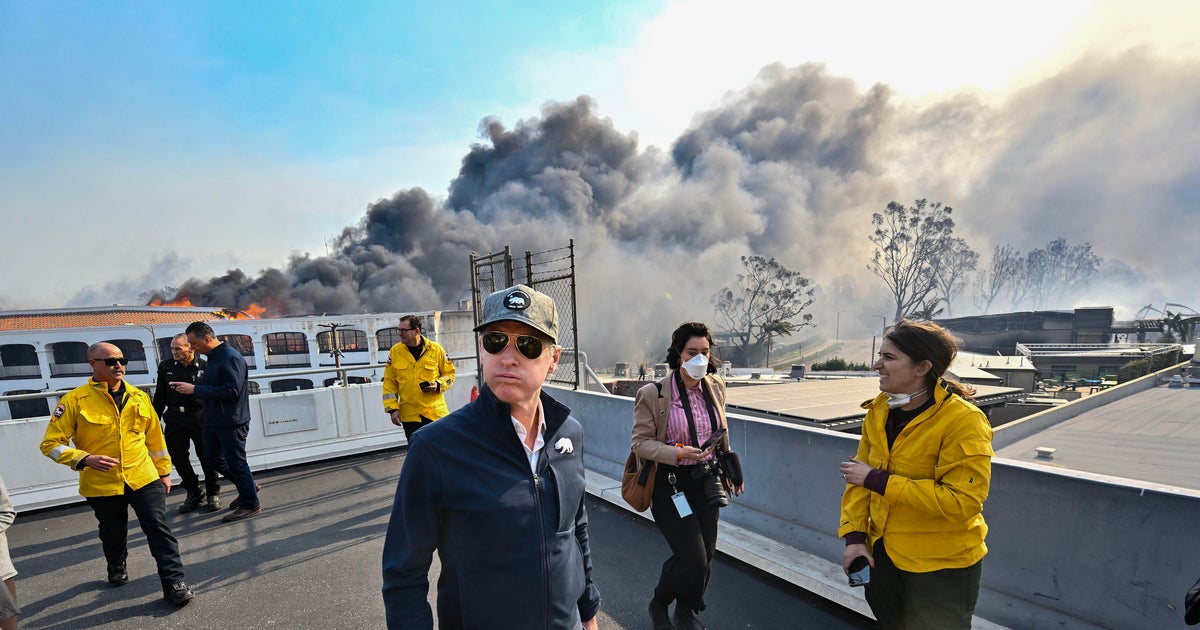PG&E Executive Meets With California Gov. Gavin Newsom Amid Bankruptcy Case
SACRAMENTO (AP) - California's governor called the chief executive of a troubled utility to his office on Tuesday for a closed-door meeting as the company struggles to emerge from a high-profile bankruptcy while facing criticism for its practice of shutting off power for millions of people to prevent wildfires.
A spokesman for Gov. Gavin Newsom says the first-term governor "spelled out in vivid detail" how the blackouts have prevented people from "refilling lifesaving prescriptions and power breathing machines" and how small businesses and schools were closed for days.
Newsom also reiterated the state would consider a potential takeover of the utility if the bankruptcy is not resolved by June 30.
Pacific Gas & Electric Corp. CEO Bill Johnson defended the company, telling reporters after the meeting that the power shutoffs have been "well planned and executed."
"I came to California with one basic purpose: Let's make sure we don't kill anybody at our operations," said Johnson, who worked for a Tennessee power supplier before joining PG&E in April. "I think we achieved that this year. I understand the hardship, I apologize for it, but for me, safety has to come first."
State and local government leaders disagree, saying PG&E has communicated poorly and often given conflicting accounts about when the lights would go out. In a response to the Public Utilities Commission last week, the company acknowledged "various, and in some cases, extreme, shortcomings."
Last year, strong winds knocked down some of PG&E's power lines, which sparked a series of devastating wildfires. One in Northern California mostly destroyed the town of Paradise, burning down more than 18,000 buildings and killing 85 people. In January of this year, facing potential damages of up to $30 billion, PG&E filed for bankruptcy.
This year, the company has been aggressive in shutting off power during dry, windy conditions to prevent wildfires. Johnson said Tuesday he believes the company won't have power shutoffs on this scale in 10 years as it works to "sectionalize the system."
"There will be fewer (power shutoffs) every year, and eventually we will get out of it," he said.
Since the utility's bankruptcy filing in January, PG&E's shareholders and creditors have battled for control of the company, putting forth competing plans in bankruptcy court that would maintain PG&E's long-running setup as a for-profit company. It's a structure that critics contend caused management to look for ways to cut corners instead of investing in equipment and other measures that would have made its electricity system far safer than it is now.
A judge appointed a mediator, and the first meeting is scheduled for Wednesday in San Francisco. But Tuesday, mayors and local leaders from more than two dozen cities and counties scattered across PG&E's sprawling service area endorsed an alternative proposal by urging regulators to consider a still-nascent proposal to convert the utility into a customer-owned cooperative.
The request outlined in letter to the California Public Utilities Commission echoes an idea already floated by Newsom and San Jose Mayor Sam Liccardo, who joined the chorus of other leaders pushing for an alternative to keeping PG&E under the ownership of profit-driven investors.
Turning the utility into a nonprofit company "would allow PG&E to begin the process of restoring public confidence, in part by allowing the public to have greater role in determining decisions that increasingly have come to define matters of life and death," the letter asserted.
To make it happen, the participating counties and cities would likely have to raise tens of billions of dollars in the municipal bond market to buy PG&E and then pay for the expensive improvements needed to ensure the utility could keep the power on instead of resorting to planned blackouts during the late summer and early autumn when California's climate traditionally escalates the risk of wildfires.
Johnson, the PG&E CEO, told reporters Tuesday he understands the cities' interests. But he said it is not the best solution for customers in the 70,000 square miles (181,300 sq. km.) covered by the company as it would potentially shift costs to rural customers outside of the big cities.
"I think the way it is structured now is the best idea for the majority of customers," he said.
Copyright 2019 The Associated Press.



